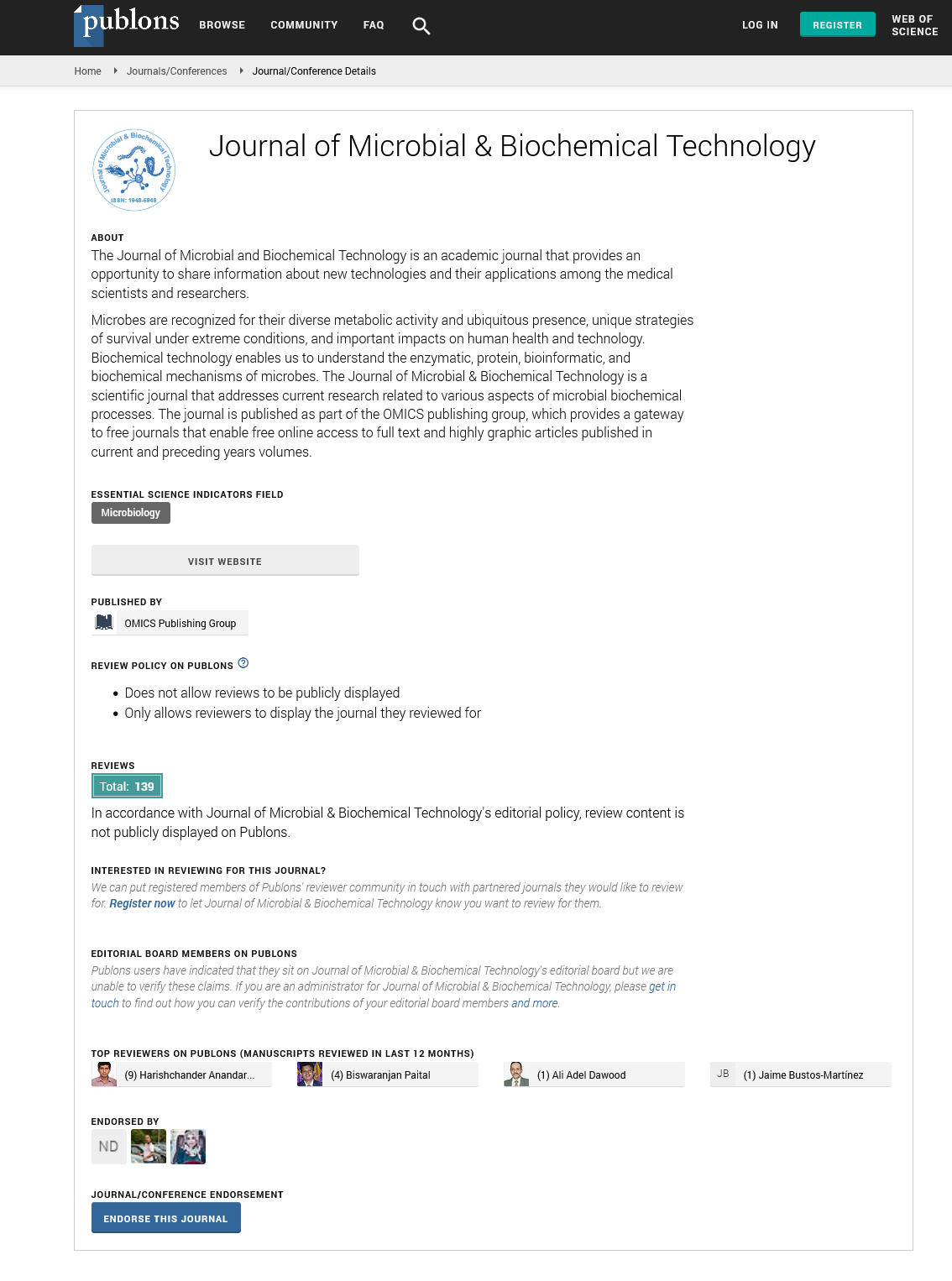Indexed In
- Academic Journals Database
- Genamics JournalSeek
- Academic Keys
- JournalTOCs
- China National Knowledge Infrastructure (CNKI)
- Scimago
- Access to Global Online Research in Agriculture (AGORA)
- Electronic Journals Library
- RefSeek
- Directory of Research Journal Indexing (DRJI)
- Hamdard University
- EBSCO A-Z
- OCLC- WorldCat
- SWB online catalog
- Virtual Library of Biology (vifabio)
- Publons
- MIAR
- University Grants Commission
- Geneva Foundation for Medical Education and Research
- Euro Pub
- Google Scholar
Useful Links
Share This Page
Journal Flyer

Open Access Journals
- Agri and Aquaculture
- Biochemistry
- Bioinformatics & Systems Biology
- Business & Management
- Chemistry
- Clinical Sciences
- Engineering
- Food & Nutrition
- General Science
- Genetics & Molecular Biology
- Immunology & Microbiology
- Medical Sciences
- Neuroscience & Psychology
- Nursing & Health Care
- Pharmaceutical Sciences
Short Communication - (2025) Volume 17, Issue 1
Fungicides Effects on Soil and its Microbial Activities
Stefano Simona*Received: 04-Nov-2022, Manuscript No. JMBT-22-19481; Editor assigned: 07-Nov-2022, Pre QC No. JMBT-22-19481 (PQ); Reviewed: 21-Nov-2022, QC No. JMBT-22-19481; Revised: 03-Jan-2025, Manuscript No. JMBT-22-19481 (R); Published: 13-Jan-2025
Abstract
Description
Soil is arguably the most important resource for food production. It is a highly complex system whose function depends not only on its physical properties but also on its biological components. In particular, soil microbes play an essential role in cycling several elements necessary for life, such as C, N and P [1]. Understanding the effects of fungicides on the beneficial activities of microorganisms is important for assessing the hazards associated with fungicides used in agriculture. Crop productivity and economic benefits are maximized by using products that retain beneficial organisms while properly controlling fungal pathogens. Different organisms may have identical or similar mechanisms and components, and microbicides that target nonspecific binding sites may directly affect non-target organisms. For example, the toxicity of carboxylic acid fungicides derives from the ability of these chemicals to bind to DNA topoisomerase II. DNA topoisomerase II is a common enzyme that unwinds and coils DNA to enable protein synthesis and DNA replication. This enzyme is found not only in fungi, but also in prokaryotic cells [2]. Some antibiotics, glucopyranosyl fungicides, are toxic to bacteria and can inhibit amino acid synthesis [3]. These fungicides are also toxic to certain non-fungal higher eukaryotes [4]. Indirect non-targeted effects are also possible. Microorganisms are functionally or nutritionally related, and changes in one component of a microbial community can affect the structure of the entire community. This is especially true for plant-associated microbes that influence and are affected by the metabolic state of plants.
The cell membrane is a selectively permeable wall that separates the contents of the cell from the external environment. Membranes perform many biological functions in all living cells. They prevent the passage of large molecules, provide cell shape, maintain cellular water potential, and are involved in signal transduction. The negative effects of fungicides on microbial membranes have been found to alter the structure and function of soil microbial communities. Addition of fungicides to laboratory-cultivated soil significantly altered the microbial balance in the soil. Initially, the fungal potency was reduced, but recovered quickly and exceeded the control potency after 28 days. Bacterial counts, on the other hand, increased dramatically after treatment. Similar changes were observed in field soils treated with fungicides. The response of cellulolytic fungal flora to field treatments with fungicides was also studied. Species such as T. koningii and P. nigricans became dominant, resulting in altered recolonization patterns. Cellulolytic bacteria were largely insensitive to the addition of fungicides to the growth medium.
Conclusion
A marked change in nitrogen mineralization followed fungicide treatment. In the field, all fungicides used inhibited nitrification to a greater or lesser extent, but the levels of ammonium ions increased. Similar changes were observed in laboratory-cultured soils. Here, treatment with high concentrations of fungicides inhibited nitrification, and treatment with low concentrations often increased nitrate production. The levels of ammonium N in these soils increased dramatically after treatment.
Towards the end of the incubation period (28 days), low concentrations of fungicides resulted in an increase in the total free amino acid N content in soil, whereas the opposite was true at high concentrations. Addition of fungicides also resulted in qualitative changes in free amino acid content in soil. Increases in specific metal ions such as K, Na, Mn and Zn have been observed in fungicide-treated soils. A compound with auxin activity was extracted and characterized as 3-indolepyruvate. However, the exact origin of this compound is unknown. It seems likely that it was an extraction artefact since IPyA is highly unstable under the extraction conditions which were employed. The potential for soil auxin activity existed however and was increased two-fold by the addition of the fungicide Captan to the soil.
References
- Bellido-Blasco JB, Arnedo-Pena A. Epidemiology of infectious diarrhea. Environ Health. 2011:659.
- Moreno AC, Fernandes Filho A, Gomes TD, Ramos ST, Montemor LP, Tavares V, et al. Etiology of childhood diarrhea in the northeast of Brazil: Significant emergent diarrheal pathogens. Diagn Microbiol Infect Dis. 2010;66(1):50-57.
[Crossref] [Google Scholar] [PubMed]
- Parsot C. Shigella spp. and enteroinvasive Escherichia coli pathogenicity factors. FEMS Microbiol Lett. 2005;252(1):11-18.
[Crossref] [Google Scholar] [PubMed]
- Escobar-Páramo P, Giudicelli C, Parsot C, Denamur E. The evolutionary history of Shigella and enteroinvasive Escherichia coli revised. J Mol Evol. 2003;57(2):140-148.
[Crossref] [Google Scholar] [PubMed]
Citation: Simona S (2025) Fungicides Effects on Soil and its Microbial Activities. J Microb Biochem Technol.17:640.
Copyright: © 2025 Simona S. This is an open access article distributed under the terms of the Creative Commons Attribution License, which permits unrestricted use, distribution, and reproduction in any medium, provided the original author and source are credited.

